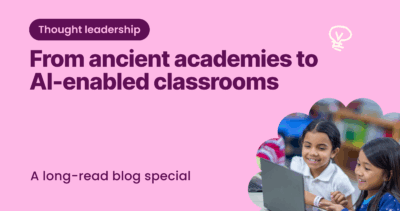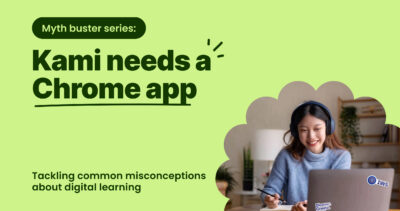
Shirin Bradfield
Social media cops a lot of flack, with many arguing the online world is a distraction for students and their learning. With smartphones in the back pockets of students everywhere, young people are spending a record number of hours on apps like Snapchat and TikTok – so it’s easy to see why social media has a bad reputation. However, it can be a powerful tool used by teachers to engage with students and extend their learning in ways most relevant to their modern lives.
Check out some of the benefits of social media, as well as practical examples of how to integrate productive social media sessions into your classroom.
Create a group
Strengthen classroom bonds and accelerate learning by creating a group on a social media platform. Having a space to talk to one another outside of school hours (about things other than school work) gives students more opportunities to connect and will help contribute to positive classroom culture. Being part of an online group can also facilitate collaborative learning and improve your students’ grades. In-person study groups still exist and serve an important purpose. But thanks to social media, students are now able to tap into this hive mind of their peers to have class discussions, ask questions, and share information… All from the comfort of their own home!
Tutorial: If you’d like a hand, check out this how-to.
Social media lesson
Just as it‘s a great way to pass the time, social media can also double as a powerful learning tool to include in your lesson plans. The countless number of apps that exist should give you an idea of their potential to be used for educational purposes – why not try to harness that in the classroom?
- In English class, you can use social media to analyze written communications and improve your students‘ modern literacy skills.
- Search up foreign social media accounts with your students to introduce them to different languages. Social media also has the added benefit of being ‘real-life‘ and can be assumed to be how people actually talk in different countries, rather than potentially outdated phrases from an old textbook.
When we start to view social media platforms as educational technology, the possibilities are endless! Need some inspiration? Check out how Atlanta-based teacher Jere Chang uses TikTok to teach inclusivity.
Instagram homework?
A great extension of social media in the classroom that lets your students tap into their creative side is to give out app-based homework assignments:
- Instead of a classic essay assignment, get your students to run a blog throughout the school year or create a social media account written from the perspective of a historical figure. They can use Twitter or Facebook pages to do this.
- Your more performative students might like to use social media platforms like Youtube or TikTok to upload educational videos or start a podcast.
With the range of social media sites available, it really can be catered to the class or the individual in a way that complements their learning style and helps them succeed. When you give students this creative and modern freedom to express themselves—with loose structure—it unleashes their potential and gives them the space to truly flourish. Try modifying your next homework assignment to include the use of social media – you might be surprised by the results.
Top tip: Hashtag #Comments4Kids on your Twitter blog to attract students and teachers from all over the world!
Teach digital citizenship
Here‘s the thing – regardless of whether or not you use social media in the classroom, students are still going to find their way online. So, by integrating it into your curriculum and using it in a learning environment, you can help monitor its responsible use and teach your students how to stay safe online. Things like cyberbullying and lack of education around privacy settings are real concerns in the digital landscape. By being a role model and teaching your classroom the basics of online etiquette, you can help them better navigate the world wide web and avoid any difficult situations that may arise. Just be sure to establish clear boundaries and guidelines for its usage before incorporating any form of social media into your lessons. These digital citizenship skills are so important and will no doubt serve your students across a lifetime of being online.
Activity: Teach your students how to distinguish fact from fiction on social media, or read our blog on Fake News lessons.
Beyond the classroom
The use of social media in lesson plans doesn’t just have to be limited to middle school students:
- You can start preparing your older classrooms for a career in the real world by introducing them to platforms like LinkedIn (think social networking for college students and beyond). Early interactions with industry leaders provide a great opportunity to build connections and start developing a professional network.
- You can also keep your class Facebook group active across your students’ schooling years so that it serves as an alum group when they graduate.
Introducing your students to the power of networking through social media helps build tangible real-world people skills that might even help them land their first job outside of school – it’s who you know!
Action: Get your students to practice networking by reaching out to one person in their chosen field.
Today’s students are all over social media sites, but that doesn’t have to be a bad thing. When social media is viewed as an educational tool and used inside the classroom, it changes from just a distraction to something that can actually be used to improve student engagement and learning across the school year. Adapt your teaching to the 21st century by incorporating social media into your lessons today.
For all your other digital classroom needs, check out the Kami app and our popular LMS integrations – hashtag winning!
You may also like

From ancient academies to AI-enabled classrooms

Improving AI literacy in American schools

